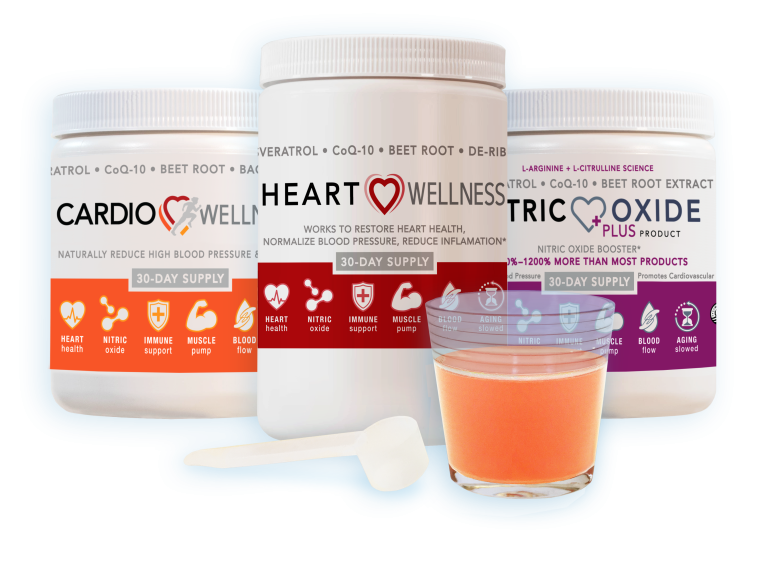Vitamin C Update

Research Finds that Vitamin C can Greatly Benefit Those with Heart Disease
Today, Heart Disease, Especially Coronary Heart Disease, is the Leading Cause of Death Around the World.
We’re launching a series of discussions on the benefits of Vitamin C — scientifically demonstrating that atherosclerosis — the buildup of plaque in the arteries which leads to heart attacks — is preventable and even reversible. It can be done quite easily. You’re probably well aware that we at Cardio and Heart Wellness have made this assertion many times before as it relates to our products and how they bring the many, many benefits of increased Nitric Oxide levels in the blood.
Furthermore, our discussions on the benefits of Vitamin C will also demonstrate that heart disease, one of the most complex and frequently researched topics in all of medicine, is not too difficult to understand when looked at from a new perspective.
Vitamin C Deficiency
Simply stated, atherosclerosis is a disease that appears to be initiated by a deficiency of Vitamin C in the innermost lining of the arteries.
The innermost lining of the arteries, called the Intima, once damaged by a lack of Vitamin C, initiates and stimulates a host of different plaque-building processes – these processes set into motion for any particular individual depend on a variety of different cardiac risk factors, but the result, arterial blockage, is always the same.
Scurvy and the Focal Process
The disease that results from insufficient Vitamin C intake over an extended period, is typically thought of as a condition that affects the entire body equally. Clinically, scurvy is characterized by weakness, anemia, and a tendency to have easy bleeding into the tissues, especially the gums. In fact, scurvy is very often a much more localized, focal process. While focal scurvy does typically require some degree of generalized Vitamin C deficiency in the body, the overall body can clinically appear normally healthy with specific areas of the body displaying a severe deficiency in Vitamin C.
Examples of Focal Scurvy
Someone suffering from advanced periodontal disease is an example of a focal scurvy — as determined by gum biopsy specimens — will not usually display the other typical symptoms of scurvy in the rest of their body. Another localized disease, cataracts, can be considered a form of focal scurvy in the cornea. Similarly, atherosclerosis can readily be characterized as “arterial scurvy” due to the lack of Vitamin C in the arterial linings appears to always be the first identifiable starting point for the development of coronary heart disease.
How Does a Focal Scurvy Occur?
In the midst of what would normally be considered sufficient Vitamin C intake? The fact is, there are known conditions in the body that can accelerate the depletion of Vitamin C in certain tissues and structures. This is certainly the case in arterial scurvy.
For this reason, the treatment of arterial scurvy, while straightforward, requires attention to details rather than a simple Vitamin C supplementation. For numerous reasons, regular Vitamin C supplementation is of benefit to nearly everyone, and the general health can be expected to improve even if no other interventions are taken. It is also important to note that Vitamin C has been shown to improve Nitric Oxide (NO) production of the endothelium which helps to reduce high blood pressure.
An important first step to treating low Vitamin C levels would be to understand why a particular person has low levels of Vitamin C in their arterial linings in the first place.
Causes of Low Vitamin C Levels
In almost every case, the cause of low Vitamin C levels in the arterial linings is significant daily exposure to destructive toxins such as, but not limited to, cigarette smoke and some drugs. These toxins keep neutralizing (oxidizing) the body’s stores of Vitamin C thus making the maintenance of active (reduced or non-oxidized) Vitamin C levels in the various tissues of the body virtually impossible.
The arterial intima is especially prone to this localized deficiency. Whenever any toxins are released into the blood, the inner lining of the arteries is logically one of the first “destinations” for the toxins to gather and start neutralizing local Vitamin C stores, at least partly explaining why arterial scurvy is probably the most common form of focal scurvy.
Once Considered Rare – Prevention and Reversal Can Now Become Expected
This discussions on the benefits of Vitamin C might at first seem too involved or detailed. The proper removal of dental toxicity, especially root canal-treated teeth, is absolutely essential for minimizing an otherwise very large source of daily toxicity. Nutritional efforts to minimize daily toxin exposure absorbed from the gut is also extremely important. When a person’s daily toxin exposure to the body has been brought to a reasonable minimum, quality supplementation is freed of its burden of working to neutralize a large and relentless toxin exposure. Then, and only then, can the natural healing of the blood vessel proceed as the antioxidant and nutrient status of its inner wall becomes optimized. If you have been a regular reader of our posted discussions on the benefits of a healthy cardiovascular system — this is not new news to you.
Amazing
So, prepare to be amazed by even more research finding the many benefits of Vitamin C and Nitric Oxide, especially if you are a health care practitioner who has always felt that atherosclerosis is largely an unstoppable and steadily progressive disease. It is not.
An objective review of the available scientific evidence demonstrates otherwise. Turn an abnormal coronary angiogram into a normal one. What is now considered a rare but theoretically possible occurrence — can now become an expected out come.

Cardio Wellness and Heart Wellness are now both fortified with 3,000 mgs of Vitamin C per day. Nitric Oxide Plus is fortified with 1,000 mgs of Vitamin C per day.
At these dosages - Vitamin C is magical for our health.
This new formula addition to Cardio Wellness and Heart Wellness provides many marvelous treatments for your health.
The science and research has been going on since the 1940s and it is voluminous. The pharmaceutical industry is scared spitless over the results of these studies. Humans are basically the only specie that does not manufacture Vitamin C, and because of that trait we have to take it in with diet. Most of us do not get enough Vitamin C to overcome the damage our bodies experience from the lack of Vitamin C (ascorbic acid).
Arterial Scurvy is the result of the lack of Vitamin C. Arterial Scurvy is nothing more than Coronary Heart Disease and it is reversible with enough Vitamin C. There are 67 health conditions caused by a lack of Vitamin C. They are as follows:
(These statements are addressing most of the issues that Vitamin C can solve, reverse or address.)
- The vessels exposed to the highest blood pressure, the arteries, are the most prone to atherosclerosis.
- Vitamin C dose-dependent studies show 2,000 mg of Vitamin C daily lowers triglycerides.
- Levels of 3,000 mg are essential for proper healing of damaged tissues.
- High blood pressure can initiate and promote continued plaque build up by overtaxing collagen-depleted blood vessels.
- High levels of Vitamin C (3,000mg) have been shown to be effective in lowering blood pressure in humans.
- Vitamin C deficiency can cause cholesterol accumulation in heart arteries even when cholesterol was not added to the diet.
- Vitamin C deficiency has been identified as the sole cause of atherosclerosis in animals.
- Administration of Vitamin C reduces incidence and severity of atherosclerosis in cholesterol-fed animals.
- Cholesterol deposits in blood vessels are shown to be reabsorbed by blood when blood levels of cholesterol is below 200.
- Vitamin C retards penetration of cholesterol into blood vessels and increases release of cholesterol already present in those vessels.
- Animals fed high doses of cholesterol show rapid reductions of Vitamin C.
- Most patients taking 3,000 mg of Vitamin C /day increased LPL levels by 100% and decreased triglyceride levels by 50 to 70%.
- HDL cholesterol neutralizes a large number of bacterial toxins capable of causing cellular damage. That is why we need high HDL cholesterol. Vitamin C to the rescue.
- The presence of calcium deposits in coronary arteries is associated with over 1000% increase in risk for coronary heart disease. Vitamin C eliminates calcium deposits in vessels.
- Vitamin C is incredibly effective in dissolving calcium and keeping it in solution.
- High levels of Vitamin C are shown to be effective in lowering blood pressure in humans.
- High blood pressure can initiate and promote continued plaque build-up by overtaxing collagen-depleted blood vessels.
- Vitamin C is essential for producing and maintaining the intercellular glue that keeps arteries strong and intact.
- Vitamin C deficiency has been shown to breakdown the “intercellular glue” into components that leak into the blood.
- Administration of Vitamin C has been shown to decrease the leakage of intercellular glue components into the blood.
- When the intercellular glue in the arteries becomes watery due to the lack of Vitamin C, the 1st step of atherosclerosis has taken place.
- All three layers in the arterial walls require the normal formation of collogen to remain healthy and strong.
- Vitamin C is required for the production and maintenance of collagen throughout the body.
- The clinical picture resulting from any toxin is prone to accumulate with a focal Vitamin C deficiency developing there.
- Cells associated with inflammation white blood cells and macrophages have up to 80 times more Vitamin C than blood plasma.
- Human arteries are commonly depleted of Vitamin C, even in individuals who appear to be well nourished.
- Insulin, a natural anti-inflammatory agent, transports Vitamin C into inflamed cells which helps to neutralize the inflammation.
- Periodontal gum disease- a source of chronic arterial inflammation linked to atherosclerosis.
- Dental disease and root canal-treated teeth release a continual flow of bacteria and toxins into the blood.
- A lack of anti-microbial power of Vitamin C enhances the ability of microbes to infect and colonize arterial walls. Microbial infection is possibly a primary reason for the chronic inflammation of the arterial wall.
- Autopsies reveal certain microbial infections cause localized inflammation, swelling and death of arterial tissue.
- Some microbial infections can generate autoimmune reaction against components in arterial walls.
- Individuals with autoimmune disease show increased prevalence of atherosclerosis.
- Vitamin C is the main effective defense against acute or chronic viral infections and the only definitive cure for many viral diseases.
- High blood levels of C-reactive protein are associated with greater degrees of inflammation and greater risk of atherosclerosis.
- Vitamin C supplementation shows significantly increased levels of cholesterol levels of cholesterol-lowering CSA in arterial walls.
- Vitamin C, able to restore impaired blood flow through the heart and small blood vessels.
- Multiple studies show diabetics have depressed, scurvy-like plasma levels of Vitamin C.
- Vitamin C competes with glucose for uptake in the cells and mitochondria (the cells energy plant).
- Insulin, usually deficient in diabetics, aids in the transport of Vitamin C into cells throughout the body.
- High blood sugar forces the kidneys to remove and discard valuable Vitamin C from the blood.
- Excess blood glucose inhibits important functions of Vitamin C.
- High blood glucose depletes Vitamin C from monocytes-white blood cells that gather at sites of inflammation and infection.
- Diabetes develops larger atherosclerotic plaques with greater fat content.
- Vitamin C plays an essential role in regulating the release of insulin by the pancreas.
- Diabetics are much more likely to have advanced periodontal disease.
- Men have significantly lower Vitamin C levels than comparable women.
- Heart attacks have escalated with the increase in refined sugar consumption.
- Sugar competes for the same transport mechanism for entrance into the body’s cells.
- Infections rapidly neutralize body stores of Vitamin C.
- Vitamin C is the most powerful antioxidant known to occur naturally in living tissue.
- The appearance of oxidative stress always requires a relative deficiency of Vitamin C for this risk factor to exert its harmful effects.
- Exercisers maintain significantly higher Vitamin C levels than non-exercisers who consume identical amounts of Vitamin C.
- Anxiety, stress, worry, irritability, dominance, and anger are all tied to the development of atherosclerosis and risk of heart attack.
- Vitamin C supplementation is shown to produce complete recovery in some cases of depression.
- Depression appears to accelerate destructive metabolism of Vitamin C.
- Elevated heart rates are a very important predictor of heart death and overall mortality as well. Vitamin C deficiency is one of the reasons.
- Vitamin C supplementation increases the ability to dissolve clots.
- Elevated white blood cell levels are associated with increased inflammation, which is another important coronary risk factor.
- Vitamin C has been shown to be effective in increasing blood flow by dilating those vessels.
- Low blood vessels of Vitamin C independently predict the presence of the unstable angina syndrome which often precedes heart attack.
- Post heart attack patients taking antioxidant formula with 1000 mg of Vitamin C had better heart function, less angina and fewer heart rhythm abnormalities.
- Scurvy-like levels of Vitamin C were found in post-heart attack patients 12 hours after heart attack.
- Scurvy by itself can cause myocarditis, an inflammation of the heart muscle.
- Patient with scurvy (deficient in Vitamin C), an enlarged heart and edema has complete remission after 14 days of Vitamin C therapy.
- Subjects with the greatest levels of Vitamin C are shown to have half the mortality risk of subjects with the lowest levels.
- Cardiovascular symptoms and findings declined as daily Vitamin C intake increased.


